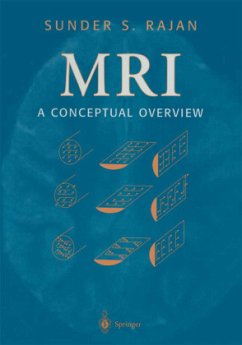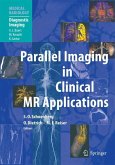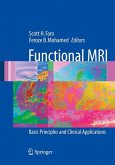This text is written for medical professionals involved in obtaining and interpreting MR images, and presented to the reader in a visual, image-based style. The author's intention is to succinctly explain the scientific principles of magnetic resonance imaging and spectroscopy, convey an appreciation for the signal encoding and decoding processes employed in MR, and cultivate in the reader a working understanding of the contrast mechanisms which apply in the acquisition and display of MR data. In addition, the text will also provide the reader with the conceptual tools require to keep abreast of innovations in the field, while serving as a ready reference for questions relating to image quality and artifacts, allowing readers to critically evaluate the advantages and disadvantages of the different systems and techniques available for clinical MR imaging.
Over the course of just a few decades, magnetic resonance (MR) has evolved from an analytical tool to a premier imaging mod ality. The ability of MR to provide cross-sectional images, as well as chemical and physiological information, has attracted students from many disciplines. Because applied MR is multidisciplinary, it is generally taught in an informal setting rather than as structured course work. During my years of teach ing the subject, I felt the need for an appropriate text for students from diverse backgrounds. The materials now available are ei ther basic introductions for the lay person or detailed reference resources providing detailed coverage of one or more aspects of MRI. I wrote this book to supplement informal teaching with a text that will provide a detailed conceptual overview. This approach to presenting the concepts will be useful for graduate students in the physical, chemical, and biological sciences who are making the transition to MRI. In addition, medical residents, fellows, and experienced MRI technologists will benefit from this de scriptive approach to MRI, which is briefly summarized in the next paragraph. Chapter I, an introduction to the magnetic resonance phenom enon, is followed by principles of image formation in Chapter 2.
Hinweis: Dieser Artikel kann nur an eine deutsche Lieferadresse ausgeliefert werden.
Over the course of just a few decades, magnetic resonance (MR) has evolved from an analytical tool to a premier imaging mod ality. The ability of MR to provide cross-sectional images, as well as chemical and physiological information, has attracted students from many disciplines. Because applied MR is multidisciplinary, it is generally taught in an informal setting rather than as structured course work. During my years of teach ing the subject, I felt the need for an appropriate text for students from diverse backgrounds. The materials now available are ei ther basic introductions for the lay person or detailed reference resources providing detailed coverage of one or more aspects of MRI. I wrote this book to supplement informal teaching with a text that will provide a detailed conceptual overview. This approach to presenting the concepts will be useful for graduate students in the physical, chemical, and biological sciences who are making the transition to MRI. In addition, medical residents, fellows, and experienced MRI technologists will benefit from this de scriptive approach to MRI, which is briefly summarized in the next paragraph. Chapter I, an introduction to the magnetic resonance phenom enon, is followed by principles of image formation in Chapter 2.
Hinweis: Dieser Artikel kann nur an eine deutsche Lieferadresse ausgeliefert werden.








